Trusted Forged vs Billet Industrial Crankshaft Supplier
The crankshaft is often called the "backbone" of an internal combustion engine. This critical component is responsible for converting the linear motion of the pistons into the rotational force that powers a vehicle or industrial machinery. Its ability to withstand immense stress, high temperatures, and constant cyclical loading is paramount to engine reliability and performance. For industrial applications—from heavy-duty diesel generators and marine engines to agricultural equipment and construction machinery—the choice of crankshaft is not merely a detail; it is a fundamental decision that impacts longevity, efficiency, and operational cost. The debate often centers on two primary manufacturing methods: forging and billet machining. This guide provides an in-depth analysis of the forged crankshaft vs billet industrial comparison, helping you make an informed decision whether you are a large-scale OEM or an individual seeking a custom, high-performance solution.
Understanding the Core Difference: Forging vs. Billet Machining
At the heart of the forged vs. billet debate lies the fundamental difference in how the metal is shaped into its final form. Each method imparts distinct characteristics to the crankshaft, making one more suitable than the other depending on the specific application, production volume, and performance requirements.
Forging is a metal-forming process that involves heating a piece of steel alloy (known as a slug or billet) to a malleable temperature and then shaping it using immense compressive forces. This is typically done using a series of dies in a powerful forging press. The process forces the internal grain structure of the metal to align with the shape of the crankshaft. This continuous, unbroken grain flow is the hallmark of a forged component and is the primary source of its renowned strength and fatigue resistance. Think of it like the grain in a piece of wood; a long, continuous grain is much stronger than one that has been cut across.
Billet Machining, on the other hand, is a subtractive manufacturing process. It starts with a solid, oversized block (a "billet") of high-quality, pre-treated steel. This billet is then placed into a sophisticated Computer Numerical Control (CNC) milling machine. The CNC machine, following a precise digital program, meticulously carves away material layer by layer to create the final crankshaft shape. This process does not reorient the metal's grain structure; the grains remain in the same random or unidirectional orientation as they were in the original block. The advantage here lies in precision, design flexibility, and the ability to produce complex shapes without the need for expensive forging dies.
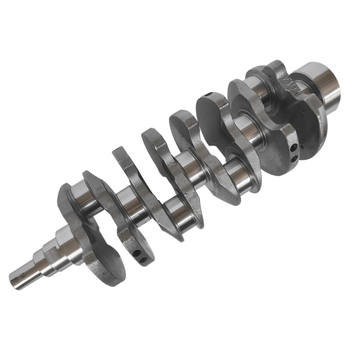
The Case for Forged Crankshafts: Unmatched Strength for Demanding Applications
Forged crankshafts are the industry standard for the vast majority of mass-produced engines, and for good reason. Their manufacturing process creates a component that is inherently optimized for the stresses it will endure. Let's explore the key advantages in detail.
- Superior Strength and Durability: The primary benefit of forging is the creation of a continuous grain structure that follows the contour of the crankshaft's journals, counterweights, and throws. This grain flow eliminates weak points and vastly improves the component's resistance to fatigue, impact, and torsional stress. In heavy-duty industrial engines that operate under high-torque, low-RPM conditions for thousands of hours, this inherent toughness is critical for preventing catastrophic failure.
- Excellent Fatigue Resistance: The compressive forces of the forging process also create beneficial compressive residual stresses on the surface of the crankshaft. This makes it much more difficult for fatigue cracks to initiate and propagate, significantly extending the service life of the component under cyclical loading.
- Cost-Effectiveness at Scale: While the initial investment in forging dies and equipment is substantial, the per-unit cost of a forged crankshaft becomes highly economical in large production runs. The process is faster and uses raw material more efficiently than billet machining, making it the preferred choice for original equipment manufacturers (OEMs) and high-volume aftermarket suppliers.
- Consistent Material Properties: The forging process refines the microstructure of the steel, closing any internal voids and ensuring a dense, homogenous material. This leads to highly consistent and predictable mechanical properties from one crankshaft to the next, which is essential for quality control in mass production.
However, forging is not without its limitations. The high cost of tooling makes it impractical for small-batch or one-off custom designs. Furthermore, the design possibilities are limited by the shape of the dies, and making changes to a design requires expensive and time-consuming re-tooling.
The Case for Billet Crankshafts: The Pinnacle of Precision and Customization
When ultimate performance, unique design, or low-volume production is the priority, billet crankshafts shine. By starting with a solid piece of superior-grade material and carving it to perfection, the billet process opens up a world of engineering possibilities.
- Unparalleled Design Freedom: Since there are no dies involved, CNC machining can create virtually any crankshaft design imaginable. Engineers can optimize counterweight shapes for better engine balance, create unique journal oiling passages for improved lubrication, or design stroker cranks to increase engine displacement. This makes billet the go-to choice for prototyping, high-end motorsports, and custom industrial engine builds.
- Use of Advanced Alloys: The billet process allows for the use of exotic and ultra-high-strength steel alloys (like 4340, 300M, or EN30B) that may be difficult or impossible to forge effectively. These materials can offer superior tensile strength and hardness, providing a performance edge in extreme applications.
- No Tooling Costs for Low Volumes: For producing a single prototype or a small batch of 10-50 units, billet is far more economical than forging. There are no die costs to amortize, making it the ideal solution for bespoke projects, restoration of rare machinery, or specialized industrial applications.
- Exceptional Precision and Finish: Modern multi-axis CNC machines can achieve incredibly tight tolerances and a superb surface finish, often reducing the need for extensive secondary grinding and polishing operations. This precision ensures perfect fitment and optimal bearing performance.
The primary drawbacks of billet crankshafts are cost and production time. The raw material is more expensive (as it's a solid, high-quality block), and the machining process is time-consuming, involving significant machine time and tool wear. Additionally, while the material itself is strong, the lack of a continuous grain flow means a billet crankshaft may not have the same level of fatigue resistance as a properly designed forged equivalent, all other factors being equal. This is a crucial point in the forged crankshaft vs billet industrial consideration for long-life engines.

Head-to-Head: Choosing the Right Crankshaft for Your Industrial Needs
To make the best choice, it's essential to directly compare the two based on the most critical factors for industrial use. The ideal selection depends entirely on the specific demands of the engine and the business case.
Strength vs. Application:
- Forged: Best for high-volume, high-torque, and high-stress industrial applications where longevity and fatigue resistance are the top priorities. Think diesel generators, commercial marine engines, and heavy earth-moving equipment. The continuous grain flow provides a safety margin against failure over millions of cycles.
- Billet: Best for ultra-high-RPM applications where rigidity and precise balance are key, or for custom builds where a unique stroke or design is required. Also suitable for applications where an extremely high-strength, non-forgeable alloy is necessary to meet specific performance targets.
Production Volume and Cost:
- Forged: Highly cost-effective for production runs in the thousands or more. The per-unit cost drops significantly as the initial tooling investment is spread across more units.
- Billet: Economical for one-offs, prototypes, and small batches (typically under 100 units). The per-unit cost remains relatively high and constant regardless of volume.
Customization and Flexibility:
- Forged: Very limited. Design is locked into the forging dies. Minor adjustments might be possible through post-forging machining, but major changes are impractical.
- Billet: Virtually unlimited. Any design that can be modeled in CAD software can be machined. This is ideal for R&D, performance tuning, and creating replacements for obsolete parts.
Ultimately, the forged crankshaft vs billet industrial decision is not about which is "better" in a vacuum, but which is the optimal engineering solution for a given problem. For 95% of industrial and commercial engines, a high-quality forged crankshaft provides the perfect balance of strength, reliability, and cost. For the remaining 5% involving specialized, low-volume, or ultra-high-performance needs, a billet crankshaft is the superior choice.
Our Commitment to Quality and Manufacturing Excellence
As a leading supplier, we understand the critical nature of this component. We have invested heavily in both state-of-the-art forging technology and advanced multi-axis CNC machining centers. This dual capability allows us to provide the perfect solution for every customer, regardless of their requirements.
Our quality control process is rigorous and uncompromising. Every crankshaft, whether forged or billet, undergoes a battery of tests:
- Metallurgical Analysis: We verify the chemical composition and purity of every batch of steel to ensure it meets our exacting standards.
- Non-Destructive Testing (NDT): Techniques like Magnaflux (magnetic particle inspection) are used to detect any potential surface imperfections or subsurface flaws that are invisible to the naked eye.
- Dimensional Inspection: Using Coordinate Measuring Machines (CMM) and other precision instruments, we check every critical dimension—journal diameter, stroke, straightness, and more—to ensure it is within micrometer-level tolerances.
- Hardness and Balance Testing: We ensure the crankshaft is properly heat-treated for optimal hardness and durability, and we dynamically balance each unit to minimize vibration and ensure smooth engine operation.
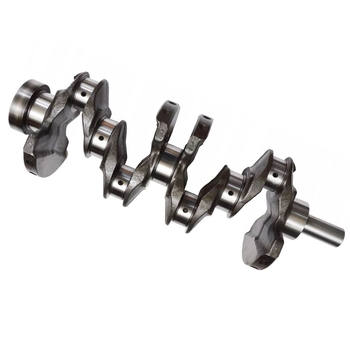
Our commitment to quality is validated by our adherence to international standards, ensuring that every product we deliver is ready for the most demanding applications. We welcome both wholesale industrial clients and individual retail customers, offering flexible solutions tailored to your needs. Whether you require a large batch of standard forged crankshafts for your production line or a single custom-designed billet crankshaft for a special project, our engineering and production teams are here to support you. We offer flexible Minimum Order Quantities (MOQs), comprehensive design consultation, and dedicated after-sales support to guarantee your complete satisfaction.
For more detailed information, please visit our official website:forged crankshaft
About the author: Dr. Alistair Finch is a metallurgical engineer with over 25 years of experience in high-performance engine components. Specializing in forging and CNC machining technologies, his research focuses on material science and fatigue resistance in industrial applications. Dr. Finch is a leading voice in crankshaft design and manufacturing, dedicated to pushing the boundaries of mechanical durability and efficiency. He frequently consults for top-tier industrial and motorsport clients.
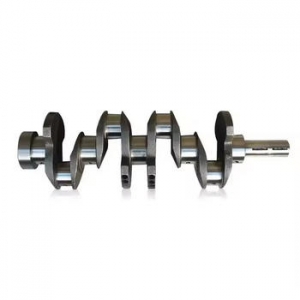 Pro heavy duty engine cranksha
Pro heavy duty engine cranksha
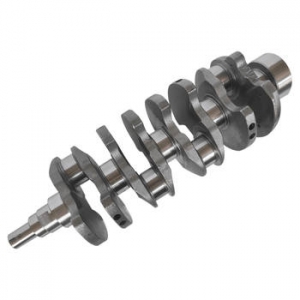 Trusted Forged vs Billet Indus
Trusted Forged vs Billet Indus
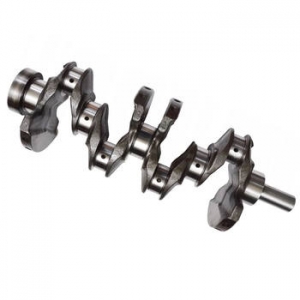 Pro Forged Steel vs Cast Iron
Pro Forged Steel vs Cast Iron
 Expert Crankshaft Material Sel
Expert Crankshaft Material Sel
